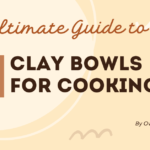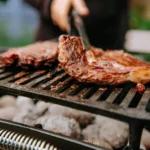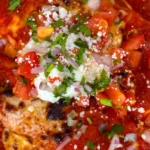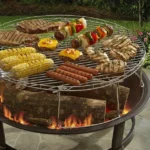Champagne isn’t just for toasting special occasions—it’s also a fantastic ingredient in the kitchen. Cooking with sparkling champagne can add depth, complexity, and a touch of elegance to various dishes, from savory sauces to decadent desserts.
Whether you’re using an expensive bottle or leftover bubbly, incorporating champagne into your recipes can enhance flavors and create restaurant-quality meals at home. In this guide, we’ll explore the best ways to cook with champagne, recommended pairings, and delicious recipes to try.
Why Cook with Sparkling Champagne?
Cooking with champagne offers several unique benefits:
- Adds Complexity & Acidity: The natural acidity in champagne enhances flavors and balances rich ingredients.
- Imparts Subtle Sweetness: The delicate sweetness of champagne can complement both savory and sweet dishes.
- Creates Light, Effervescent Textures: In batters and sauces, the carbonation can add a unique, airy quality.
- Enhances Aromas: Champagne-infused dishes develop a fragrant, sophisticated aroma that elevates the entire meal.
Best Types of Champagne for Cooking
While any sparkling wine can be used in cooking, some varieties work better than others. Here’s what to consider:
1. Dry Champagne (Brut & Extra Brut)
- Best for savory dishes like seafood, poultry, and creamy sauces.
- Provides acidity without overpowering sweetness.
- Works well in pan sauces and risottos.
2. Semi-Dry or Demi-Sec Champagne
- Slightly sweeter, making it ideal for desserts and glazes.
- Great for fruit-based dishes and caramelized reductions.
3. Prosecco & Cava (Budget-Friendly Options)
- Affordable alternatives that offer similar bubbly effects.
- Suitable for cocktails, batters, and light sauces.
4. Rosé Champagne
- Offers fruity, berry-like flavors.
- Perfect for desserts, vinaigrettes, and delicate poultry dishes.
How to Use Champagne in Cooking
1. Champagne Sauces for Savory Dishes
Champagne-based sauces add elegance to seafood, chicken, and pasta.
Classic Champagne Cream Sauce
Perfect for salmon, chicken, or pasta dishes.
Ingredients:
- 1 cup champagne
- ½ cup heavy cream
- 2 tbsp butter
- 1 shallot, minced
- Salt & pepper to taste
Instructions:
- In a saucepan, melt butter and sauté shallots until soft.
- Pour in the champagne and simmer until reduced by half.
- Stir in the heavy cream and cook for another 5 minutes.
- Season with salt and pepper, then drizzle over your dish.
2. Champagne Marinades for Meats & Seafood
Champagne’s acidity tenderizes meat and enhances flavor.
Champagne Citrus Marinade (Great for Chicken & Fish)
Ingredients:
- 1 cup champagne
- Juice of 1 lemon
- 2 tbsp olive oil
- 2 cloves garlic, minced
- 1 tsp Dijon mustard
- Salt & pepper to taste
Instructions:
- Whisk all ingredients together.
- Marinate chicken or fish for at least 30 minutes before cooking.
3. Champagne in Baking & Desserts
Bubbly can enhance cakes, pastries, and even frostings.
Champagne Cake with Buttercream Frosting
Ingredients:
- 2 ½ cups flour
- 2 ½ tsp baking powder
- ½ tsp salt
- 1 cup unsalted butter
- 2 cups sugar
- 4 eggs
- 1 tsp vanilla extract
- 1 cup champagne
Instructions:
- Preheat oven to 350°F (175°C) and grease cake pans.
- Whisk together flour, baking powder, and salt.
- In a separate bowl, cream butter and sugar until fluffy.
- Add eggs one at a time, then mix in vanilla.
- Alternate adding dry ingredients and champagne, mixing gently.
- Pour batter into pans and bake for 25–30 minutes.
4. Champagne in Cocktails & Glazes
Sparkling wine can be used to create luxurious beverages and glazes.
Champagne Reduction Glaze for Meats
Ingredients:
- 1 cup champagne
- ¼ cup honey or maple syrup
- 1 tbsp balsamic vinegar
Instructions:
- Simmer all ingredients in a pan until thickened.
- Drizzle over grilled meats or roasted vegetables.
Tips for Cooking with Champagne
- Use Fresh Champagne: Avoid using flat, old bubbly for best results.
- Cook on Low Heat: High heat can cause champagne to lose its delicate flavors.
- Avoid Overpowering Ingredients: Champagne shines best in light, balanced recipes.
- Pair with Complementary Flavors: Citrus, herbs, and mild cheeses work well.
Conclusion
Cooking with sparkling champagne is a fantastic way to add elegance and complexity to your dishes. Whether making a creamy sauce, a delicate marinade, or a decadent dessert, champagne brings a touch of sophistication to any meal.
Experiment with different varieties and recipes to discover new culinary delights. Cheers to delicious cooking!






